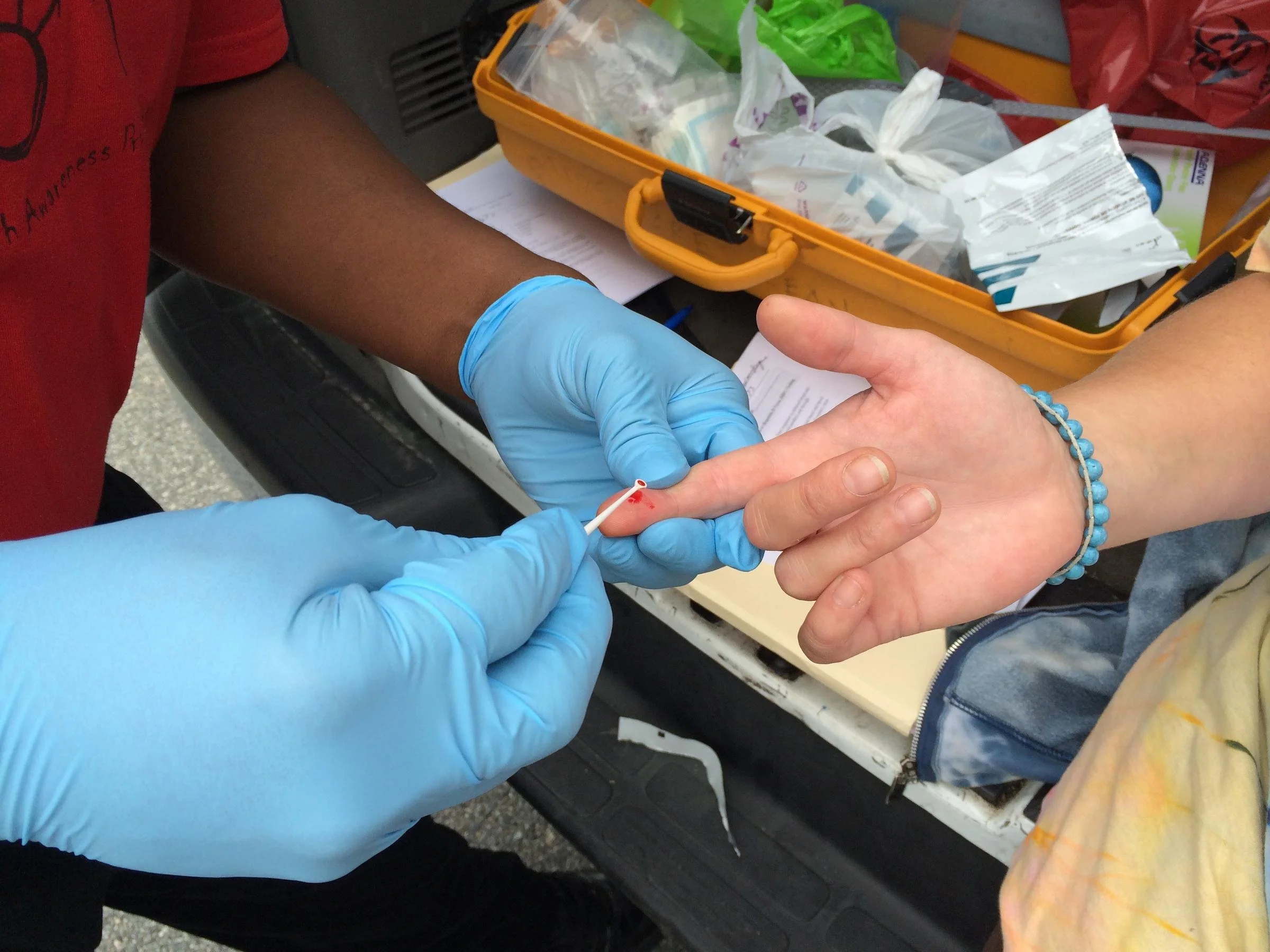At the Crossroads: the Rise of Hepatitis C
Testing for hepatitis C at the mobile needle exchange van. Photo by Kristin Gourlay.
Hepatitis C infects an estimated five million Americans, though most of them don’t know it. Now, deaths from hepatitis C are on the rise in baby boomers. And new infections are creeping up among a younger generation of injection drug users. But there's new hope. Until recently, their only options for treatment were complicated regimens of injections that caused major side effects and sometimes didn’t work. Today, new drugs can cure the disease, with few side effects. It's what many people living with hepatitis C have been waiting for. The trouble is, the drugs are so expensive they're out of reach for many. So where do we go from here?
This eight part series, produced in 2014, looked at this unique moment in time for hepatitis C, a chronic infection that primarily infects baby boomers, with especially high rates among the incarcerated, veterans, and injection drug users. It's been called the "silent killer," because symptoms usually don't emerge until decades after a person has been infected. By then, the liver may be badly scarred. Hep C is the leading cause of cirrhosis and liver cancer, and can be deadly if untreated.
The good news is that we can now cure hepatitis C. But for a hefty price tag: tens of thousands of dollars for a full course of treatment with drugs like Sovaldi and Harvoni. So who pays? For many of the millions of infected Americans, we'll all pay, through programs like Medicaid, Medicare, and prison health care systems.
In this documentary series, we head inside a medium security prison clinic to meet inmates who are hoping for a second chance, and a cure. We ride in along in the mobile needle exchange van in a struggling New England town, where outreach workers are trying to keep injection drug users safe and get them tested for hepatitis C. We hear the stories of people who have been living with chronic hepatitis C for decades, waiting for a cure. And we meet the doctors, epidemiologists, and scientists who are battling the disease.
This series was produced for Rhode Island Public Radio as a project for The California Endowment Health Journalism Fellowships, a program of the USC Annenberg School for Communication and Journalism
